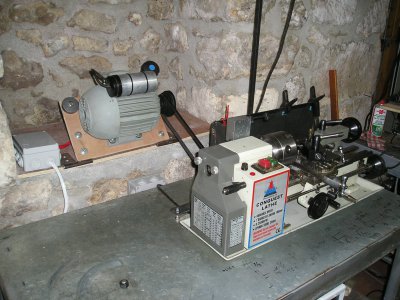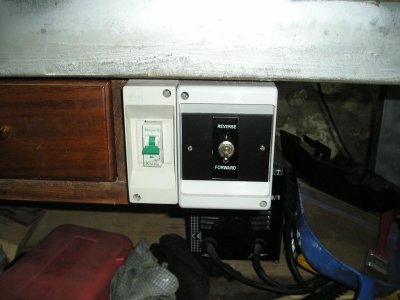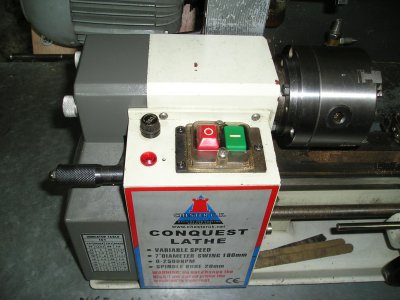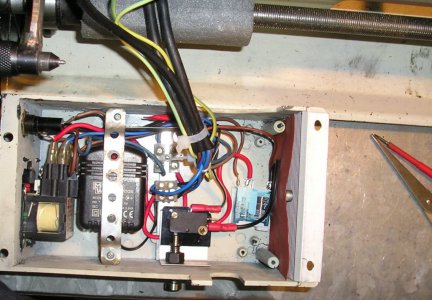Hi Kroll:
Many (not all) single phase motors rotation can be reversed*. The "start winding" must be reversed in regard to the "run winding" Making this change causes the rotor
to rotate in the opposite direction. The "start winding" will have a centrifical switch which turns off when the rotor comes up to name plate speed.
"Induction" single phase motors are unlikely reversable. An induction motor for any machine tool is not compatable since the "overal start torque" is rather weak Most machines in a machine shop have an inertia factor such as lathe parts & a 3 or 4 jaw chuck or a face plate. These items require additional torque to get them moving.
I have a bench grinder ( 1/3 HP which can be reversed - however I have to take the rotor out and change a wire to another lug. Obviously this type would not be compatable with a lathe. Some motors have a "start capacitor" in the "start" winding which increases the "start torque" until the motor gets up to speed and then the centrifical switch shuts of the "starting scenario.
If needed I have both single and three phase wiring diagrams & can send you a diagram on this site. this will take a couple of days or so since I have another issue to resolve.
In the interim you might want to get on the internet and call up "Single Phase Motor Windings" and review the diagrams.
Regards,
jbollman
Part of what you are saying is true, but a little clarification is needed.
You are correct in that many but not all single phase motors can be reversed. For most types of machine tool motors, this is possible, if the motor manufacturer left you access to both windings of the motor. Eg. If your motor only has two wires accessible, it is not reversible. However if you have four or more wires, then it is most likely possible to reverse the direction of the motor.
However, almost all single phase motors are induction motors. Exceptions would be a "universal" motor, which will run on AC or DC, using a combination of brushes and induction.
And induction motors actually have very high starting torque, usually at least double their rated torque, which makes them perfect for starting large, high inertia machines, like lathes, mills and air compressors.
The capacitor usually found in single phase motors, is used to create a phase differential between the start and the run windings, which makes the motor start to spin, and once spinning, the centrifugal switch shuts it off. Without this differential, you would just create a large electro-magnet, and get a loud buzz from the motor. A three phase motor does not need such capacitors, as the phase differential already exists between the phases naturally.
If you really study how an induction motor works, you soon realize that there is a bit of magic to it. You have to use electricity to create magnetism, which then creates electricity, which then creates magnetism, and having several of these fluctuating magnetic fields rotating at a specific frequency and timing, creates a rotational force (torque) which causes a shaft to spin.
If there is interest, I would be happy to expound on the intricacies of motors, and their various types, though I think it would be best served in a separate thread, for fear of hijacking this one.
Sorry if I hijacked!
-Cody
Sent from my iPad using Tapatalk HD




